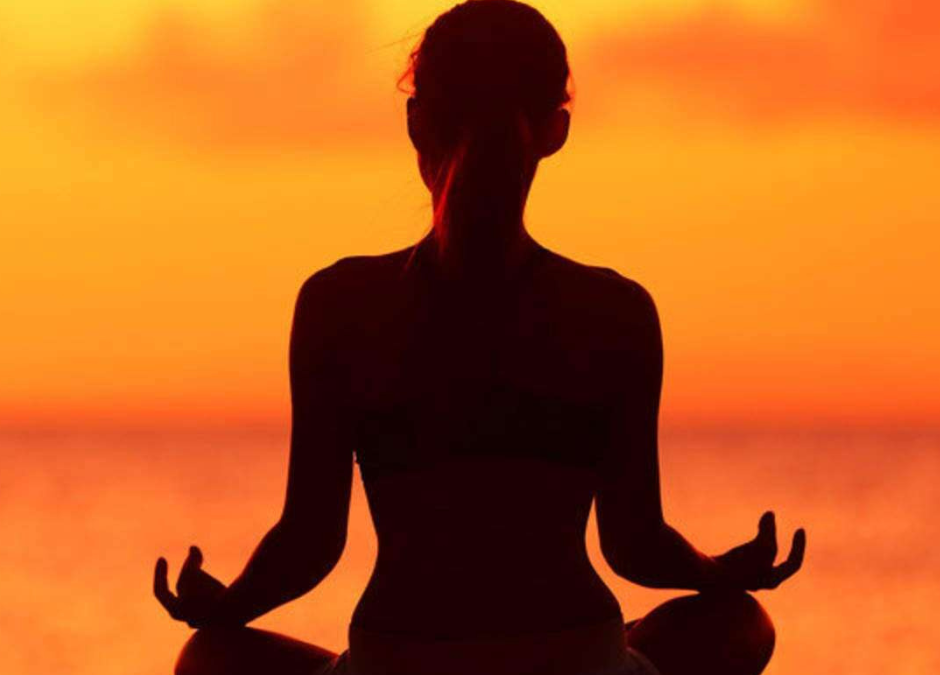
by Tirtha Acharya | Nov 10, 2022 | Health
20 Tips On Living In Present Moment
Living In Present Moment Concept:
Living In Present Moment – The foundation of this concept i.e. “living in present Moment” is given in Eastern philosophies like Hindu and Buddhist philosophies. As I have not studied other philosophies and religions I am not sure if this concept is given in other philosophies or religions as well. However Patanjali and Buddha have given importance to living in present. “Patanjali Yoga Sutra”, chapter 3, verse no. 52 and chapter 4, verse number 33 talk about living in present moment.
Similarly, the entire focus of Buddha was to live in the present. This practice made many people enlightened during his time. His entire teaching is based on mindfulness i.e. living in present moment. Living in present moment is the way to liberation. The practice of “living in present” awakens the inner consciousness which clears all physical, mental and spiritual blockages. This is the path of self- awakening. This practice, which raises awareness level, releases the inner impurities and gives complete self- purification.
Twenty tips on living in present moment:
 1) Early in the morning, as soon as you wake up in bed, sit down in bed with a straight back and neck. Close your eyes and observe your breath. Be aware, attentive and conscious to recognize inhalation and exhalation. Realize that the moment and activity is impermanent. Realize that you are not a breath (an observed) but an observer. Realize that if you have hatred or clinging in mind, it brings misery in life. Practice this for 10 minutes or longer, morning, evening or before going to bed.
1) Early in the morning, as soon as you wake up in bed, sit down in bed with a straight back and neck. Close your eyes and observe your breath. Be aware, attentive and conscious to recognize inhalation and exhalation. Realize that the moment and activity is impermanent. Realize that you are not a breath (an observed) but an observer. Realize that if you have hatred or clinging in mind, it brings misery in life. Practice this for 10 minutes or longer, morning, evening or before going to bed.
2) When you go to toilet, excrete mindfully i.e. feel the sensation of abdominal organs and excretory organs. Be aware of your activities. Be aware of your body position. Realize this moment and activity is impermanent.
3) Wash your face consciously. When you wash your face, feel the touch of palm to your face, feel the touch and temperature of water. Witness the activities, and movement. Realize this is also impermanent.
4) When you brush your teeth, do it consciously. Feel the touch of brush to teeth and jaws. Try to feel tooth- paste and water in your mouth. Observe the activities like hand movement when you are brushing your teeth. Being here and in now helps you for living in present moment.
5) When you drink tea, do it mindfully. As you hold the cup, witness it. Feel the movement of the hand as you bring the tea cup to your mouth, also feel the touch of the cup and lip. When tea enters the mouth, feel it with your mouth and tongue. Also feel the sensation as it enters into your abdomen. You can do it for all types of liquid- water, juice, etc.
6) When you eat a meal, feel the chewing as well. Try to be in the present.
7) When you go for a morning walk, move every single step mindfully. Feel the sensation of leg movement.
8) Follow the same as number seven during jogging and running as well. Also observe the breath, heart-beat, circulation, etc. Perform your activities by living in present moment.
9) When you take a shower, feel the touch and temperature of the water. Feel the touch of your hand to body. Observe the moment and movement of different parts of your body.
10) When you take off or put on your dress, do mindfully- witnessing your body move to know how it moves. Also feel the sensation of your body during this time.
11) Be mindful about various postures of the body- like standing, seated, resting, lying, moving, etc. This can be done accompanied with breath awareness.
12) When you talk to somebody, watch yourself. Observe the movement of your mouth and lips. Witness the words and sentences you are speaking. Observe your emotional mental condition when you are talking to others.
13) When you give something to others, observe the movement and sensation of the body. Also witness your thoughts and feelings during this time.
14) When you receive something from others, witness your physical movement and body sensation. At the same time watch your emotions and contemplations.
15) When some urges such as sex, drugs, wrong food, misconduct, etc. arise in mind observe it rather reacting to it. Do not make any judgment about it. Simply, witness its process- how it arises, how it sustains and how it passes away. Do suppress nothing. Let it happen, let it go. Your work is only to behold. These things come at the surface from the depth level of the mind. When you remain conscious of them, they will eradicate from the root level. Whenever any urges come in the mind, there are some changes in the body, body sensation, breath, circulation, etc. Try to feel it mindfully. Live in the present and witness all the physical and mental activities carefully without reacting to it.
16) When some good intentions or tendencies arise in mind, watch them and let it prosper. Also observe the effects in the mind and body.
17) When someone scolds or slanders you, hates, criticizes, etc. Be aware that the person is in an unpleasant situation. Be conscious so that you won’t receive his bad feelings. Your work is to observe the mental and physical activities in the present moment. You should not miss any moment. If you start harming yourself with the hatred, criticism, slanders, etc. of other people you will miss living in present moment. If you realize that there is some mistakes from your side knowingly or unknowingly, mentally seek pardon with the words like, “May all forgive me for my mistakes whomever I might have hurt or harmed; also I pardon all whoever might have hurt or harmed me knowingly or unknowingly”. Do this every night before going to bed. Further, live consciously every moment so that no mistake happens to you. Do not divide the energy of your consciousness into the past and the future. You have to live completely in the present.
18) When someone admires, appreciates, or respects you, observe yourself. Observe your physical and mental condition. If any arrogance or haughtiness has been raised in mind, observe its beginning, observe its sustaining and finally ending without being affected or reacting to it. Eventually you will clear out all the arrogance which degrades you. Feel the situation of body and mind by living in present moment.
19) When you get angry with others, or fear of something or somebody, witness the effects in your mind. Observe the physical changes like heart-beat, respiration, etc. during that time. Totally live in the present to know the present situation of your body and mind. Do not get affected by them, behold consciously those things instead. Eventually, such things will get rid from the root level.
20) When you have good feelings for others, live in the present and witness your feelings. Let the good feelings prosper.
For more Nepal Yoga Home Blog, please click and read our latest posts!

by Tirtha Acharya | Jun 25, 2022 | Health
How To Lose Weight Fast, But Safely
What can you expect from a rapid weight loss here some best techniques on how to lose weight fast and safely:
- Practice yoga everyday
- Cut refined carbs
- Protein, fat, and vegetables
- Control calories and portions
- Build a better breakfast
- Snack smart.
- Skip sugary beverages
- Start strength training
- Go to bed earlier
- Resist the urge to skip a meal
- Drink your H2O
- Munch on mineral-rich foods
- Let yourself off the hook
- Look for our emblem on food labels
- Avoid alcohol
Brief Description on how to lose weight fast
Losing weight is a goal for many people, but it can be difficult. Its important to lose weight safely and effectively to avoid putting your health at risk
Trying to lose weight can be a daunting task. Every time you turn around, there’s a new diet or weight loss program. How can you know which one is right for you? How can you make sure that you lose weight safely and effectively?
There are several steps for quick weight loss, including a healthy diet, movement, and lifestyle changes. You also can choose invasive treatment like liposuction. But Heliotherapy Institute gives you an alternative fat burning with light therapy. It is a great option to lose weight safely.
In this article, we will provide you with some best ways on how to lose weight fast and in safe way
What can you expect from a rapid weight loss?
Losing weight fast is possible, but it requires commitment and hard work. If you’re not ready to make permanent changes to your lifestyle, rapid weight loss isn’t for you. If you try, you can expect to lose anywhere from five to ten pounds in the first week. After that, the rate of weight loss will slow down somewhat, but you can still expect to lose one to two pounds each week until you reach your goal.
Practice yoga everyday
In order to lose weight, you can practice morning yoga everyday. You can combine yoga asana, breathing techniques and some meditation techniques at least around 1 hour everyday. Which keeps you physically mentally and spiritually healthy and weight loss is the side effect of yoga by keeping you healthy. This is the safest way on how to lose weight fast and safe.
Best fast weight loss tips
If you’re looking to lose weight fast, you can take some basic steps to ensure you’re doing it safely. First and foremost, always consult your doctor before beginning any new diet or fitness regime. Losing weight is possible with a healthy diet and some simple lifestyle changes.
Cut refined carbs
Another technique of how to lose weight fast is carbs. Cutting back on refined carbs is one of the most effective methods to reduce weight. It’s also one of the quickest and easiest ways to cut calories. Try replacing refined carbs in your diet with healthy unrefined such as whole grains, fruits, and vegetables.
Another way to cut back on refined carbs is to avoid processed foods as much as possible.
Eat protein, fat, and vegetables
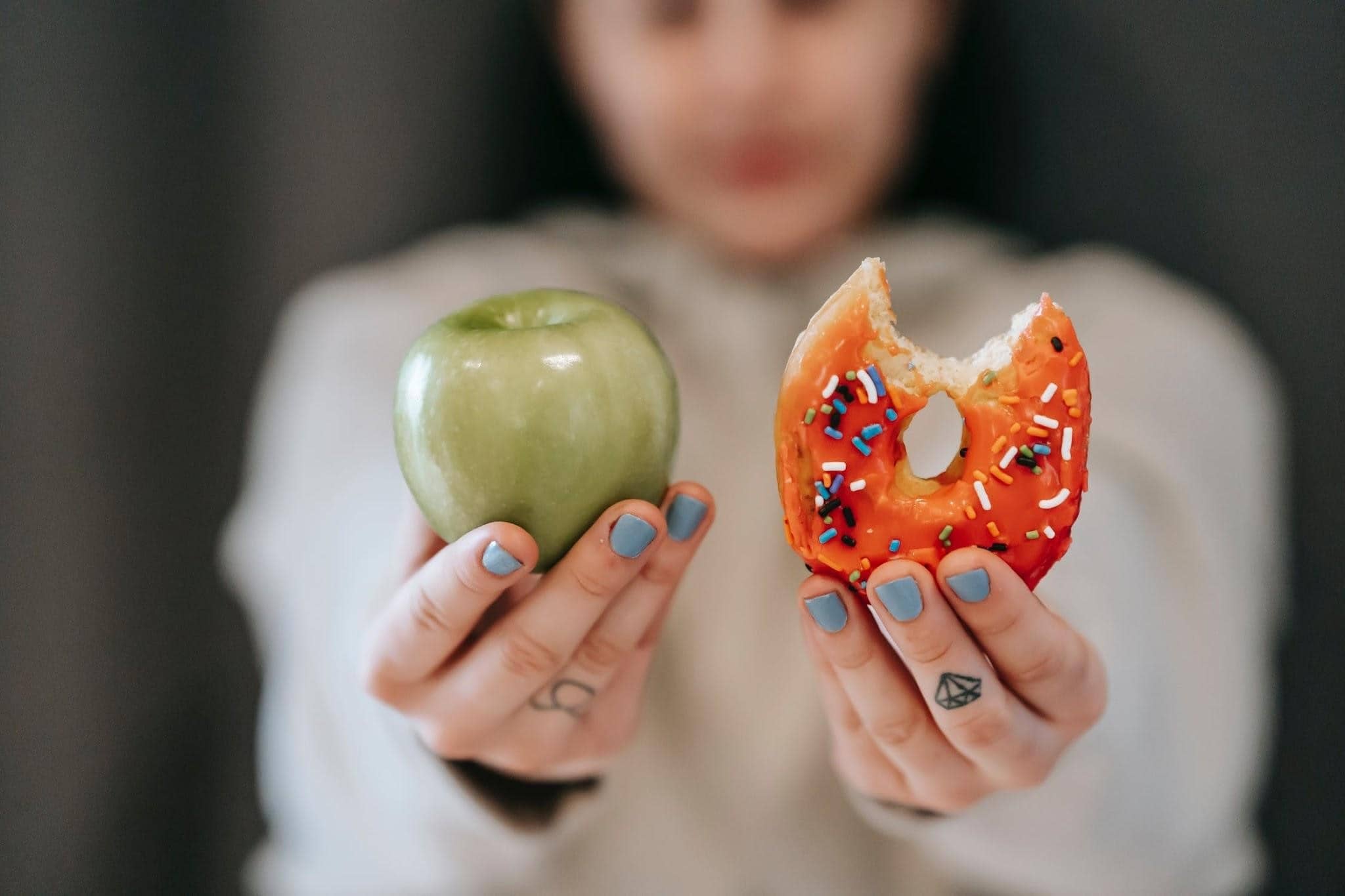
Every meal should have at least one source of protein, fat, and vegetables. Protein keeps you full and satisfied and helps maintain muscle. Fat is the most satiating macronutrient and helps with hormone production and regulation. Vegetables are nutrient-dense and contain antioxidants that support health.
- Protein sources: сhicken breast, turkey, fish, tofu;
- Fat sources: olive oil, butter, coconut oil, avocado;
- Low-carb vegetables: broccoli, cauliflower, spinach, tomatoes.
Ensure that each meal balances all three of these nutrients to support your goals.
Control calories and portions
If you want to lose weight fast but safely, you need to pay attention to calories and portion control. Cutting them means eating fewer calories than your body needs.
Their number depends on your age, gender, body size, and activity level. A general rule of thumb is that the average person needs about 2000 calories per day to maintain weight. Eat less to have a deficit. We are all different sizes and have different caloric needs.
In addition, you can use smaller plates. It seems you are eating more food than you are. It also helps to prevent mindless snacking and late-night eating.
Build a better breakfast
Build a better breakfast by including protein, fiber, and healthy fats in your morning meal to stay satisfied throughout the day. Try eggs with veggies and avocado, oatmeal with almond butter, or yogurt with berries.
Skipping breakfast won’t help you lose weight fast. You could miss out on essential nutrients and may end up snacking more throughout the day because you feel hungrier.
Snack smart
The best way to avoid mindless snacking is to have healthy snacks. Keep a stash of cut-up vegetables, fruits, nuts, seeds, greek yogurt, popcorn (air-popped or with minimal butter), and whole-grain crackers in the fridge to grab something healthy when hunger strikes.
Skip sugary beverages
Reducing the drinking of sugary beverages is one of the easiest ways to lose weight fast. If you’re a fan of soda, iced tea, or other sweetened drinks, try replacing them with unsweetened green tea, sparkling water, or herbal tea.
Start strength training
Strength training helps to lose weight fast, builds up bones and muscles, reduces your risk of injuries, and improves mental health. Try to train three to four times a week for 30 minutes. If you’re new to this, ask a certified personal trainer or the doctor for help getting started.
Add in some cardio exercises to burn more calories and speed up weight loss.
Go to bed earlier
If you want to lose weight, one of the best things you can do is get more sleep. Well-rested people tend to weigh less than those who are sleep-deprived. So, make sure that you’re getting at least eight hours of sleep every night. Also, this prevents night overeating.
Resist the urge to skip a meal
Skipping meals may seem like an easy way to cut calories and lose weight, but it can do more harm than good. When you skip a meal, your body goes into starvation mode. It starts to store fat instead of burning it. But you’re also more likely to make up for the missed calories by overeating at your next meal.
Drink your H2O
Water is often overlooked as a weight-loss tool, but it’s essential. Drinking enough water helps to control hunger and can increase your metabolism. But when you’re trying to lose weight fast and safe way, it’s important to up the amount of it.
Munch on mineral-rich foods
Eating a diet rich in minerals is essential for maintaining a healthy weight. They help regulate metabolism, build strong bones and muscles, balance sugar levels, and absorb nutrients from food. Getting plenty of minerals in your diet can help ensure that your weight loss efforts are effective.
Let yourself off the hook
Many people trying to lose weight beat themselves up for every little slip-up or missed opportunity to exercise. This kind of thinking sets you up for failure before you even begin. Instead, allow some grace and understanding — nobody is perfect, and everybody slips up sometimes.
Look for emblems on food labels
The FDA’s Center for Food Safety and Applied Nutrition (CFSAN) oversees the labeling of food products in the United States. If a food product meets the FDA’s requirements for bearing an emblem, it can display the phrase “safe to eat” on its label.
If you’re trying to lose weight fast, look for foods that bear the emblem. When you see it on a food label, you can be confident that the product meets FDA standards for calories, fat, saturated fat, cholesterol, sodium, carbohydrates, fiber, and protein.
Avoid alcohol
If you want to lose weight fast, one of the first things you should do is cut back on alcohol. Alcohol contains empty calories that can add up quickly and lead to weight gain. Also, it stimulates the appetite. You can overeat and usually with junk food.
If you’re trying to lose weight, it’s best to avoid alcohol or only drink in moderation.
Summary
Fast weight loss can be a complicated journey. But if you have a goal to reach your perfect body shape, you can pass it easily. Our proven experience pieces of advice will help you lose weight fast and safely.
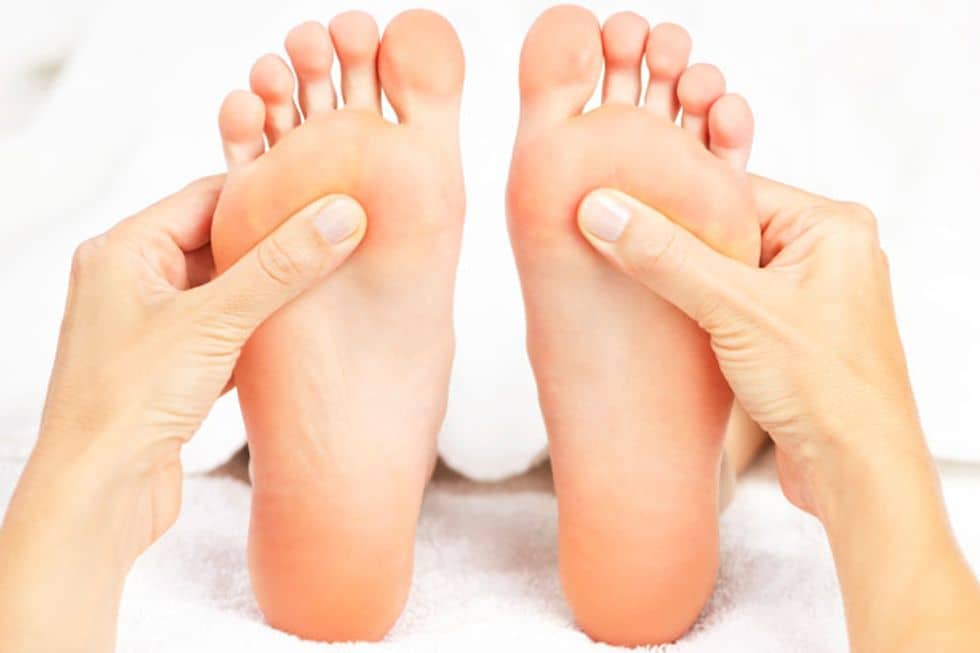
by Tirtha Acharya | Feb 20, 2022 | Health
What is reflexology/ Acupressure? The Principle of Reflexology
Reflexology is a type of massage that contains and applying varying degrees of pressure to the feet, ears, and hands. It has been more popular in recent years. You formulated this theory based on the notion that distinct biological components may relate to specific organs and body systems. Reflexologists may know as individuals who use this kind of healing. According to reflexologists, applying pressure to these points provides various health benefits for the person.
When applying pressure to specific body areas, reflexologists use foot charts to help them navigate their way. Many practitioners, such as chiropractors and physical therapists, provide reflexology services, often utilized in combination with other hands-on treatments.
How Does Reflexology Work?
In the opinion of reflexologists, reflexology may assist in the release of stress, which may aid in the healing and regeneration of the body. There is a range of possibilities when it comes to how this process works.
Reflexology works with the central nervous system.
Sir Henry Head and Sir Charles Sherrington did research in the 1890s that led to the development of this idea. For the first time, they were able to establish a neurological connection between the epidermis and the interior organs and the fact that the whole nervous system reacts to a stimulus.
Based on the notion that applying pressure to the feet, hands, or ears stimulates the peripheral nerves in these extremities to send a calming message to the central nervous system, reflexology has become more prevalent in recent years.
By using reflexology, you may educate your body to modify the level of tension in your body. Additionally, it promotes overall relaxation puts internal organs and their systems in optimum functioning. The circulatory and neuropeptide systems in the body are among the impacted methods, all of which are good.
Reflexology helps to relieve pain by lowering stress levels.
Another theory that may assist in explaining how reflexology could be able to give pain relief is the gate control hypothesis, which the Neuro matrix theory may also refer to as of pain in recent years. According to this point of view, pain is a subjective sensation created by your brain’s neurons. Although the brain may work independently of sensory input, it can also make unpleasant feelings in response to emotional or cognitive factors.
It may refer to as activation of the autonomic nervous system.
Therefore, factors that influence your sense of pain, such as your mood, or external variables such as stress, may affect your feeling of pain therefore. According to this concept, reflexology may aid in the relief of pain by reducing blood pressure and elevating emotions during treatment.
Reflexology keeps the body’s vital energy flow.
Another theory asserts that the human body can harness “vital energy.” The absence of treatment for stress may result in energy congestion, leading to decreased bodily functions that can finally end in illness. According to this belief, it contributes to the maintenance of energy flow.
The Zone Theory may use to begin the treatment
It may believe that the Zone Theory, which states that the body may divide into ten vertical zones, was responsible for the establishment of reflexology as a unique kind of medical treatment. Each zone may represent a separate component of the body, ranging from the fingertips and toes to the crown of the head. Example: If you are standing up and placing your hands on the insides of both thighs (palms facing down), zone 1 includes your thumb and great toe.
On either side of the torso, the index finger and second toe, for example, would indicate zone 2; and so on through the body. According to reflexology theory, you may utilize a point or area on the feet or hands to access any organ, valve, muscle, or other structure that is situated within a reflexology zone. It is possible, for example, to identify the eye point by working between toes 2 and 3 or between fingers 2 and 3. According to previous statements, it may think that the neurological system is responsible for the connections between pressure locations and other parts of the body.
If you like to sign up for the reflexology training, you can see the details here and email us on nepalyogahome@gmail.com.
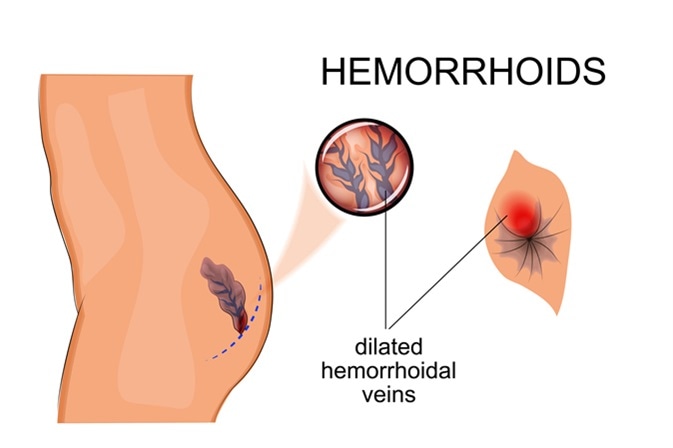
by Tirtha Acharya | Feb 1, 2022 | Health
Home Remedy of Piles
Piles is one of the ano-rectal diseases which occurs in Gudapradesha (anus). It has become a common disease in the society due to inappropriate diet, sedentary lifestyle, low fiber diet, prolonged sitting or standing, constipation, etc. In Ayurveda the main cause is of piles is due to disturbances in the jatharagni. Medicinal therapy is mentioned mainly for piles in the earlier stages, where the Doshas involved, symptoms and complications are not very severe.Piles can be managed by conservative management, surgery or cauterization (agnikarma). In this article we will discuss about the home remedy of piles.
Piles, are clumps of dilated veins in the anus and lower rectum. These become swollen and inflamed causing pain and rectal bleeding while defecation. Incidence of piles can occur at any age and can affect both the sexes. It has been estimated that at least 50% of individuals over the age of 50 years will have, at some point, experienced symptoms related to piles.
It is a very common disease in most societies, especially in Asian countries. Their symptoms like uneasiness, discomfort, pain and /or bleeding during defecation, constipation and tenesmus cause a great deal of discomfort. They are usually of two types; external or internal with respect to their position with anal orifice.
Types On the basis of position
1. Internal
2. External
External Piles: External hemorrhoids are those that occur outside the anal verge (the distal end of the anal canal).
Internal Piles: Internal hemorrhoids are those that occur inside the rectum.
The symptoms of pathological piles depend on the type present.
Internal hemorrhoids usually present with painless rectal bleeding while external hemorrhoids may produce few symptoms or if thrombosed significant pain and swelling in the area of the anus.
Here Are The Home Remedy Of Piles
The home remedy of piles includes drinking more fluids, eating more dietary fiber (such as fruits, vegetables and cereals high in fiber), yoga exercise ( better if you take some therapeutic yoga training which help to heal specific problem like piles), practicing better posture, and reducing bowel movement strain and time. Wearing tight clothing and underwear may also contribute to irritation and poor muscle tone in the region and promote piles development.
Women who notice they have painful stools around the time of menstruation would be well-advised to begin taking extra dietary fiber and fluids a couple days prior to that time.
Fluids emitted by the intestinal tract may contain irritants that may increase the fissures associated with piles. Washing the anus with cool water and soap may reduce the swelling and increase blood supply for quicker healing and may remove irritating fluid.
Many people do not get a sufficient supply of dietary fiber (20 to 25 grams daily), and small changes in a person’s daily diet can help tremendously in both prevention and treatment of piles or home remedy of piles.
Dietary and lifestyle modification
Passing hard stool on the anal mucosa may cause damage to the anal cushions and lead to symptomatic piles. Increasing intake of fiber or providing added bulk in the diet might help eliminate straining during defecation. In a clinical studies of piles, fiber supplement reduced the risk of persisting symptoms and bleeding by approximately 50%, but did not improve the symptoms of prolapse, pain, and itching. Fiber supplement is therefore regarded as an effective treatment in non-prolapsing piles.
It can take up to 6 weeks for a significant improvement to happen. As fiber supplements are safe and cheap, they remain an integral part of both initial treatment and of a regimen following other therapeutic modalities of piles. Lifestyle modification and home remedy of piles should be advised to any patients with any degree of piles as a part of treatment and as a preventive measure. These changes include increasing the intake of dietary fiber and oral fluids, reducing consumption of fat, having regular exercise, improving anal hygiene, abstaining from both straining and reading on the toilet, and avoiding medication that causes constipation or diarrhea.
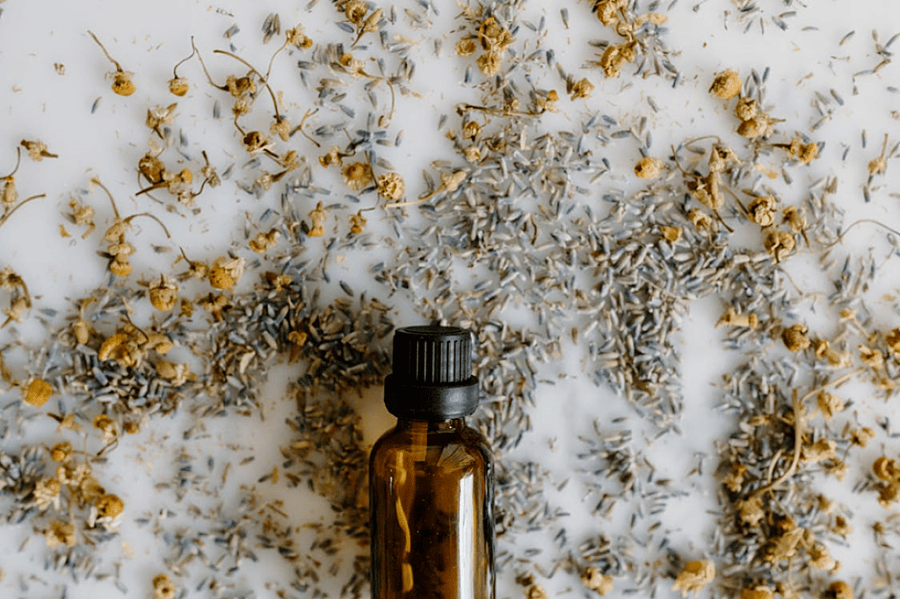
by Tirtha Acharya | Jan 1, 2022 | Health
7 Best Essential Oils For Yoga In 2022
Yoga and meditation are emerging as wellness therapies for the youth, adults, and elderly. They help rejuvenate tired minds and bodies and provide immense peace and focus. Astute yoga followers use new techniques to get the most of this traditional healing practice. Essential oils are one such therapy that imparts a relaxing feeling in a yoga session.
Modern-day stresses affect optimal health. Essential oils have a beneficial effect on the mind and help reduce anxiety, clear thoughts, and balance behavior. The relaxing notes in essential oils allow mental clarity as you sit with closed eyes and crossed legs. It encourages confidence and mindfulness through the sense of smell, which further enhances your yoga practice. Here are seven of the best essential oils to complement your yoga practice and ease out blocked minds and energies.
CBD Oil
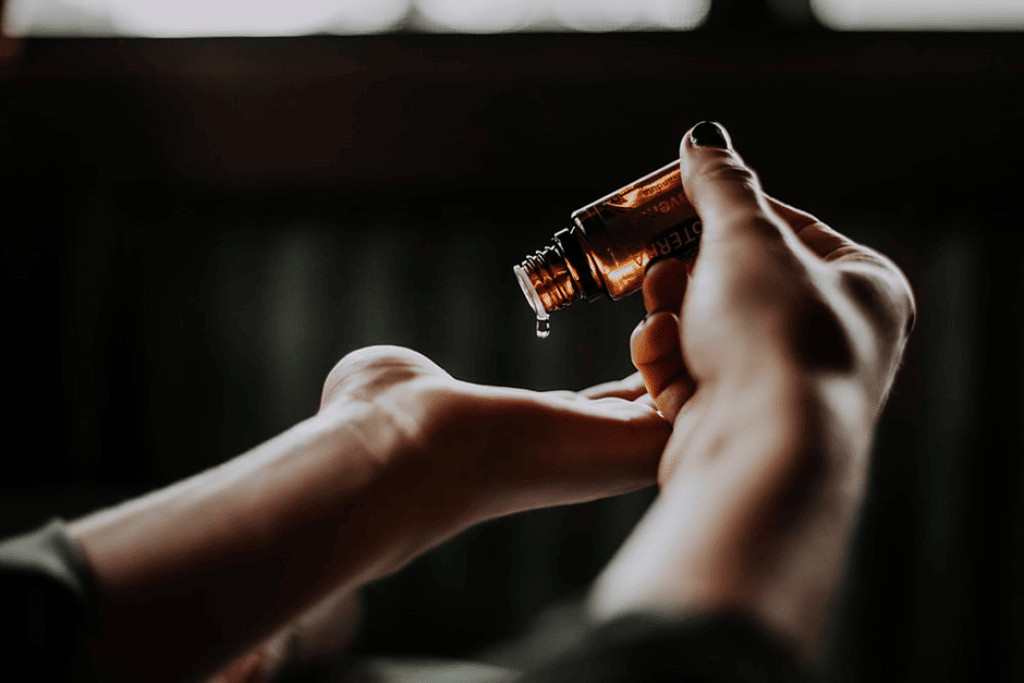
Image Source: Unsplash
CBD stimulates your mind and puts you in the right frame of mind for yoga practice. Ingesting or applying cannabidiol products to your body decreases stress, encourages relaxation before you start yoga, and promotes yogis’ overall health and wellness.
Put a few drops of CBD oil under your tongue before starting your yoga practice, and let it absorb for 30 seconds. You will feel relaxed in the next few minutes. You can also use a CBD-infused lotion on aching joints or sore muscles before doing your Pranayama or Hatha Yoga. One can try CBD vaping for yoga and you can choose the best CBD cartridges devices to soothe your senses and start meditation.
Frankincense Oil

Image Source: Unsplash
It is one of the best essential oil blends found at yoga studios. Frankincense has a long history of use in physical and spiritual healing. Some of the potential benefits of Frankincense oil include sleep-enhancing and mental clarity properties. Frankincense brings peace and balance to the soul. It is also an anti-inflammatory agent.
To avail of the relaxing properties of Frankincense before yoga class, rub a few drops on wrists, palms, or neck. You will get a sense of calmness every time you inhale it during practice.
Bergamot Oil
Bergamot oil is an ideal complement to your yoga training. This essential oil manufacturing involves cold-pressing of bergamot orange rind. It has a citrus scent and finds most use in perfumes and cosmetics. Bergamot oil is uplifting and calming and can even reduce high blood pressure and heart rate. It is best used in aromatherapy to treat anxiety and depression.
Apply bergamot essential oil to your pulse points before starting yoga to prevent your mind from wandering and increasing a positive mood. Bergamot is safe for skin and face, hence its rising popularity.
Patchouli Oil
Patchouli gained tremendous popularity in yoga studios because of its connection with spiritual practices in the 1960s and 1970s. The dried leaves of the patchouli plant are of great use in creating dark golden brown patchouli essential oil for yoga practice. Patchouli oil has an earthy and woody aroma with traces of fruitiness.
Regular aromatherapy practitioners can use patchouli oil with mist spray to ward off tension. It helps relieve stress and anxiety and is perfect if you wish to connect to your root chakra. Apply two drops of patchouli oil to your neck or temples, or put three to four drops of patchouli in a diffuser of your choice. You can make it a part of your face care routine.
Clary Sage Oil
The primary role of yoga or meditation session is to increase your inner peace. Clary sage oil infuses positivity by spiritually uplifting your mood and senses. Clary sage oil extracted from a herb provides therapeutic relief, apart from fragrant addition to perfumes.
Clary sage oil provides relief in emotional turmoil situations. It also calms hormonal fluctuations in women and induces relaxation and well-being in menopause. Dilute a drop of Clary sage and rub it onto your wrists to perfect your practice.
Peppermint Oil
Peppermint reminds one of a refreshing taste. Peppermint essential oil has a mint-fresh invigorating scent to take your workout to the next level. It stimulates the creativity and concentration required in yoga practice. It also increases your energy level. Avoid dabbing peppermint oil on the skin close to bedtime, affecting sleep.
When your yoga class ends, apply peppermint oil on a chilled face towel and place it on your face to wipe off sweat. The menthol in peppermint oil gives a cooling effect ideal after hot yoga.
Lemongrass Oil
Citrus scents are energizing. Lemongrass oil carries the bold lemon scent you need to kick-start your yoga class. This oil is perfect for your early morning yoga class or when you feel drained of energy to start Sun Salutations.
Lemongrass essential oil adds an energy impetus to your yoga schedule and adds extra focus to your asanas. Begin your day with a fresh, lemony aroma of lemongrass oil to feel a surge of all-day energy.
Key Takeaways
There are various ways to maximize the benefits of essential oils during a yoga or meditation session. While room diffuser is a common practice, you can dilute the essential oil of your choice with a carrier oil or lotion before applying them. Use an essential oil based on individual needs, moods, or stress levels. Drop its use if you feel any discomfort.

by Tirtha Acharya | Jun 30, 2021 | Health
Beginner’s Guide to a Plant-Based Diet + Tips for Making the Switch
Have you been thinking that switching to a plant-based diet makes a lot of sense, but you just don’t know where to start? You’re not alone! Plant-based diets are becoming increasingly popular because of their amazing benefits.
It’s one of the smartest things you can do to boost your overall health, have more energy, live a longer life, and take better care of the planet. Many chronic disease symptoms can be prevented, managed, or even reversed by going plant-based.
And your risk of diabetes, heart disease, cancer, and many other illnesses is significantly lower, too. Making the switch to a whole-food plant-based diet also reduces chronic inflammation and helps you maintain a healthy weight.
Here’s our beginner’s guide to a plant-based diet plus our top tips for making the transition easy and enjoyable!
The Basics: What is a Plant-Based Diet?
A whole-food, plant-based diet relies on natural plant foods to meet your nutritional needs. The focus is on whole unrefined, minimally processed foods that come from plants. You consume very limited or no animal foods, including meat, dairy, eggs, fish, and honey.
What Beginners Need to Know About Going Plant-Based
Making the switch to a plant-based diet doesn’t have to mean becoming a vegan or vegetarian. If you choose to, you can still consume small amounts of animal products. Consume mostly whole, plant-based foods is still considered a plant-based diet.
The Five Main Food Groups of a Plant-Based Diet
Here are the five main food groups of a whole-food, plant-based diet:
- Vegetables
- Fruits
- Tubers and Root Vegetables
- Whole Grains
- Nuts, Seeds, and Legumes
The Benefits of Switching to a Plant-Based Diet
The benefits of a plant-based diet are numerous. They include:
- Better Overall Health: A whole-food, plant-based diet can prevent or slow the progress of many chronic illnesses, including heart disease, diabetes, and certain types of cancer. Those who go plant-based tend to live longer, too. That’s because plant foods tend to be higher in fiber, antioxidants, and other nutrients while being lower in saturated fat and cholesterol.
As a result, you will probably also notice that you have more energy and can think more clearly throughout the day. You will likely feel healthier in general and experience fewer health complaints like headaches and tummy troubles.
- Easier Weight Management: A whole-food, plant-based diet eliminates the processed, sugar-filled foods that lead to obesity. It also incorporates more fruits and vegetables while reducing fatty meats, which means that people who follow this type of diet tend to be leaner without worrying about counting calories.
- It’s Better for the Planet: Eating plant-based is better for the planet because it’s more sustainable than eating meat grown on industrialized, factory farms. Meat-heavy diets require more natural resources and produce more greenhouse gas emissions. If you’re looking to live a greener lifestyle, making the switch to a plant-based diet is a great place to start.
Tips for an Easy Transition to a Plant-Based Diet
So, are you ready to make the switch? Here are our top tips for an easy and smooth transition to a plant-based diet.
1. Take Time to Educate Yourself
This is an incredibly important first step because it will help you define your reasons for making the switch to a plant-based diet. Educate yourself about the health and nutrition benefits of going plant-based. Learn about how animals on factory farms are treated and familiarize yourself with the environmental impacts of industrialized meat production.
2. Consider Your Mindset
You must approach this new way of eating with a positive mindset and an open mind. Remind yourself of all the wonderful things you’re gaining from transitioning to a plant-based diet, instead of dwelling on what you’re giving up.
This shouldn’t be about deprivation, willpower, or missing out. In fact, the more you experiment with plant-based eating, the more you’ll see that you’re really not missing out on anything. You’ll learn pretty quickly that vegan and vegetarian foods are just as delicious… and you’ll love the way they make you feel, too.
3. Substitute, Don’t Eliminate
If your normal dinner is something like a chicken breast with rice and a side salad, you’ll be pretty unsatisfied if you just take away the chicken and don’t replace it with something else. Instead of simply eliminating the meat, find a suitable plant-based substitute to replace it with, such as tofu, lentils, or beans.
4. You Don’t Have to Go Meatless All the Time
Remember, switching to a plant-based diet doesn’t have to mean becoming vegan- unless that’s what you want to do! But do consider experimenting with new plant-based meat replacements in your recipes to see what you like.
If you’re not ready to give up meat completely, try going meatless on certain days each week, such as Meatless Mondays. Or keep certain meals meatless, like no meat at breakfast or lunch, and then a small serving with dinner. It’s ok to do a little experimenting to see what works best for you.
5. Do Try to Eliminate Red Meat Though
If you decide to continue to eat meat occasionally, do consider eliminating red meat entirely. It may sound tough, but you’ll get more health benefits from your plant-based diet if you take the plunge. Red meat can take a major toll on your health, even in moderate amounts.
According to a study published by JAMA Internal Medicine, eating just two servings of red or processed meats per week increases your risk of heart disease. It’s also difficult to digest, which makes it a leading cause of bloating and tummy troubles.
And of course, red meat is high in saturated fats, so it’s a major contributor to unhealthy weight gain.
6. Stick to Familiar Preparation Methods
There’s no reason to change everything at once. If chicken salad sandwiches are your favorite, make them the same way you always do but substitute chickpeas for the chicken. Or, if you’re crazy about barbeque, grill some tofu, slather it with barbeque sauce, and serve it with your favorite plant-based sides.
Need more ideas? Turn traditional beef chili into Three-Bean Chili. On Taco Tuesday, make your tacos with a lentil filling. Taking your favorite recipes from meat-based to plant-based really isn’t as difficult as you might think. Sticking to familiar recipes will make the transition to a plant-based diet so much easier.
7. Learn a Few Go-To Plant-Based Recipes
Switching to a new eating and cooking style can be challenging but learning a few go-to recipes can really help. As you begin to get more comfortable with converting your favorite recipes to plant-based, try rotating in some new recipes here and there.
Having a little fun and exploring new dishes, textures, and flavors is a great way to ease into this new lifestyle. Choose a few plant-based ingredients and recipes that really appeal to you and give them a try. If you love them, add them to your list of go-to meals.
If you don’t like it, find a way to modify it or try something else entirely. The more you experiment, the more you’ll learn about which plant-based foods and flavor combinations you like most. That’s the key to making a change you can stick to for the long haul!
8. Plan Ahead
Plan on doing meal planning, grocery shopping, and meal prep about once a week, especially when you’re just getting started. This will make it much easier to stick to your new eating plan, it will save you money, and it will reduce food waste.
Once a week, sit down and plan out all of your meals for the week and make a grocery list. On your day off, go grocery shopping and prep your food as you put it away. You can simply wash and chop your produce, or you can batch cook your meals.
Either way, advanced planning and preparation are the keys to success anytime you’re making a major lifestyle change, and switching to a plant-based diet definitely qualifies.
9. Call Ahead Before Eating Out
Some restaurants don’t have a lot of plant-based options to choose from, but most do or are at least willing to modify a dish so it’s vegetarian-friendly. Planning is key when it comes to eating out or ordering in.
Call the restaurant and explain your dietary needs. Ask what options are on the menu and if the kitchen can accommodate your preferences. You will probably be pleasantly surprised to find that most restaurants are more than willing to work with you.
And remember, you don’t have to eat meatless at every meal. You can still enjoy your favorite restaurants in moderation, even if they don’t have vegetarian options. What matters is that you’re sticking to a mostly plant-based diet and eating fewer animal products overall.
The Takeaway Message: Progress, Not Perfection
Remember to give yourself some grace as you go through this process. Don’t be the person who has one slip up and then simply gives up. That’s the exact opposite of proactive thinking. It’s like dropping your phone and then purposely smashing it with your foot.
Transitioning to a plant-based diet shouldn’t be all or nothing. Mistakes are how we learn and grow. The key is to keep making progress, no matter how big or small. We are all just human after all.

 1) Early in the morning, as soon as you wake up in bed, sit down in bed with a straight back and neck. Close your eyes and observe your breath. Be aware, attentive and conscious to recognize inhalation and exhalation. Realize that the moment and activity is impermanent. Realize that you are not a breath (an observed) but an observer. Realize that if you have hatred or clinging in mind, it brings misery in life. Practice this for 10 minutes or longer, morning, evening or before going to bed.
1) Early in the morning, as soon as you wake up in bed, sit down in bed with a straight back and neck. Close your eyes and observe your breath. Be aware, attentive and conscious to recognize inhalation and exhalation. Realize that the moment and activity is impermanent. Realize that you are not a breath (an observed) but an observer. Realize that if you have hatred or clinging in mind, it brings misery in life. Practice this for 10 minutes or longer, morning, evening or before going to bed.







